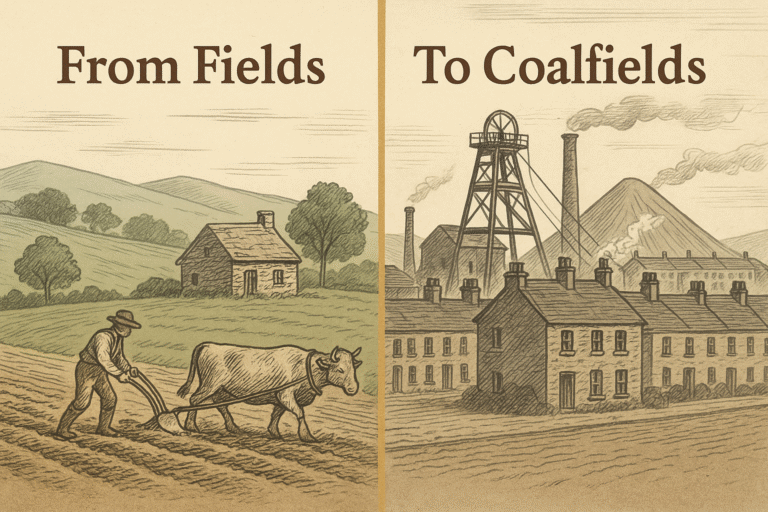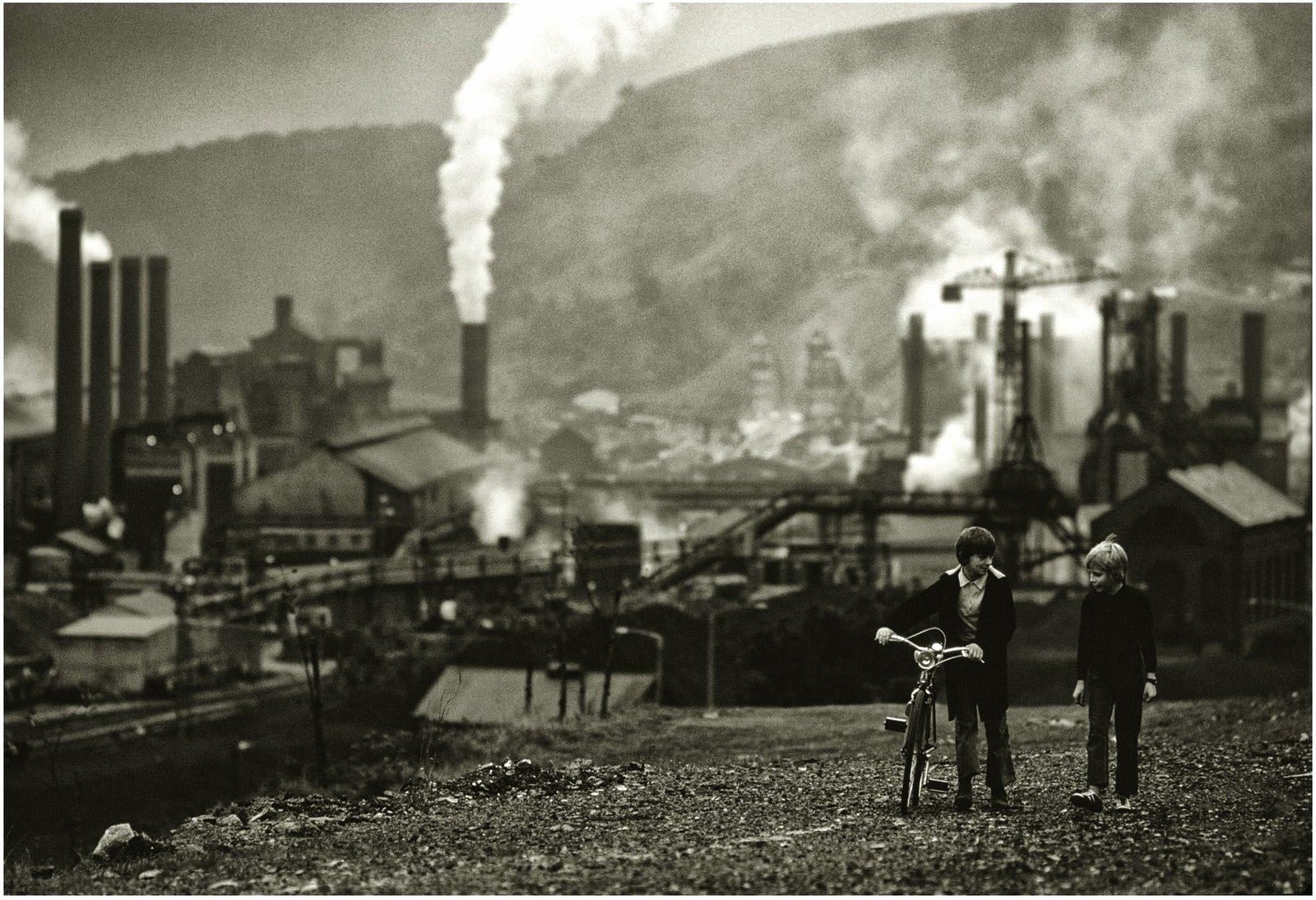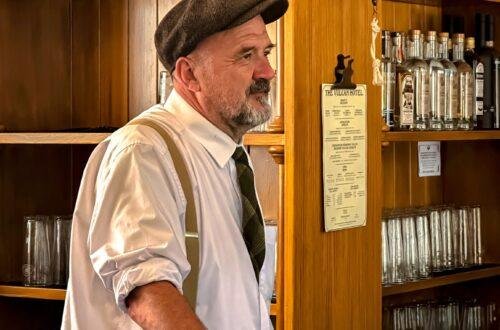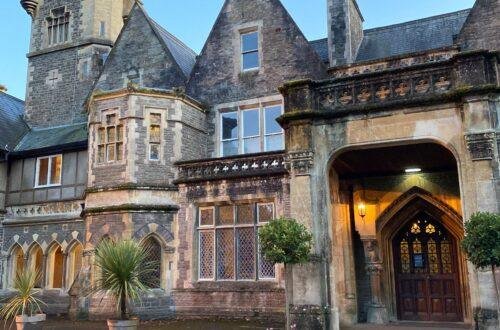Before the Coal Came
Life in the South Wales Valleys
Before and After the Mines

When people think of the South Wales Valleys, coal is usually the first thing that comes to mind—and rightly so. For over a century, coal mining defined our towns, shaped our communities, and put Wales at the heart of the Industrial Revolution. But what about before the pits? What was life like in the Valleys before the coal seams were cracked open? Let’s take a step back and uncover the quieter, often overlooked chapter of Welsh history—and how everything changed once mining took hold.
Life in the South Wales Valleys Before Coal
Before coal came calling in the 1800s, the Valleys were rural, peaceful places made up of scattered farms, small villages, and dense woodland. Think quiet hillsides, winding rivers, and communities where everyone knew each other. People lived off the land—subsistence farming was the norm, with a bit of weaving, milling, and blacksmithing thrown in. It was a hard life, but it was steady and deeply connected to the landscape.
A Mostly Agrarian Life
The population of the Valleys before the coal boom was modest. In 1801, just before large-scale mining kicked off, the total population of Glamorgan was around 70,000—and most of that was centred around the coast and market towns like Cardiff and Swansea. The Valleys themselves were sparsely populated, dotted with tenant farmers and labourers working small plots of land.
Cattle, sheep, and crops like oats and barley were the backbone of the local economy. Many people also kept pigs and chickens to feed their families. Markets were local and small, with trade happening mostly between neighbouring villages.
Housing and Schooling
Homes were basic, often one- or two-room cottages made of local stone, with thatched roofs and earthen floors. Life was communal—extended families lived close together, and neighbours helped each other out. Schooling was minimal at best. A few church-run schools existed, but literacy rates were low and education wasn’t compulsory. Children were more likely to be helping in the fields than reading in a classroom.
Religion, however, played a strong role in community life. Chapels dotted the hillsides, often doubling as places for worship, social gatherings, and basic instruction. The early seeds of the strong chapel culture South Wales became known for were already being sown.
The Arrival of Coal: A Tectonic Shift
By the early 19th century, things began to change—and fast. With the Industrial Revolution in full swing, coal became the black gold that powered everything from factories to steamships. And guess what? The South Wales Valleys were sitting on one of the richest coalfields in the world.
The shift was dramatic. Entire villages transformed almost overnight. Where once there were sleepy farming communities, mining towns sprang up, built to house the growing army of colliers flooding into the area.
Rapid Population Growth
Between 1801 and 1901, the population of Glamorgan soared from 70,000 to over 1 million. Mining towns like Merthyr Tydfil, Rhondda, and Tredegar exploded with life. Rows of terraced houses were thrown up in tight lines along the hillsides to accommodate workers and their families.
Many of these homes still stand today—solid, stone-built, and steeped in the stories of the people who lived there. They weren’t luxurious by any means: cramped, with outside toilets and no central heating, but they were warm, close-knit places where community mattered.
Work, Family, and Daily Life
Life in the mining towns was tough but full of spirit. Men worked long, dangerous shifts underground, while women ran households, raised children, and often took on laundry or sewing to bring in extra pennies. Children were sent to work young—many entering the mines as “trappers” or working on the surface until laws gradually changed things.
Still, education improved during this time. As mining communities grew, so did the demand for schools. The 1870 Education Act brought in compulsory schooling, and chapels continued to play a key role in teaching, preaching, and offering some social mobility.
Community Spirit and Culture
If there’s one thing the coal era is remembered for, it’s the incredible sense of community. When disaster struck—which, sadly, it often did in the pits—people came together. Choirs, union halls, rugby clubs, and chapel socials became the beating heart of Valley life. Culture flourished, even in hardship.
From Fields to Coalfields—and Beyond
The arrival of coal reshaped South Wales in every way imaginable. It brought jobs, growth, and a sense of purpose—but it also brought danger, division, and eventually decline. By the end of the 1980s, most of the mines had closed, leaving behind the remnants of an industrial past still visible today.
But before coal, there were fields. There were families carving out lives on the hillsides, tending sheep, and walking into town for market day. And those stories matter too.
At Cardiff & the Valleys Guide, we believe in telling both sides of our history—the booming coal era and the quieter, often forgotten rural past that came before it.
Final Thoughts
Understanding what life was like before the coal mines helps us appreciate just how much changed—and how resilient our communities truly are. The Valleys have always been about more than coal. They’re about people, place, and a spirit that’s stood the test of time.
If you’re curious to learn more, stay tuned for our upcoming mini guides—each one diving into a different corner of Cardiff and the surrounding Valleys, with stories from both before and after the pits arrived.
Explore the present. Honour the past. One place at a time.




